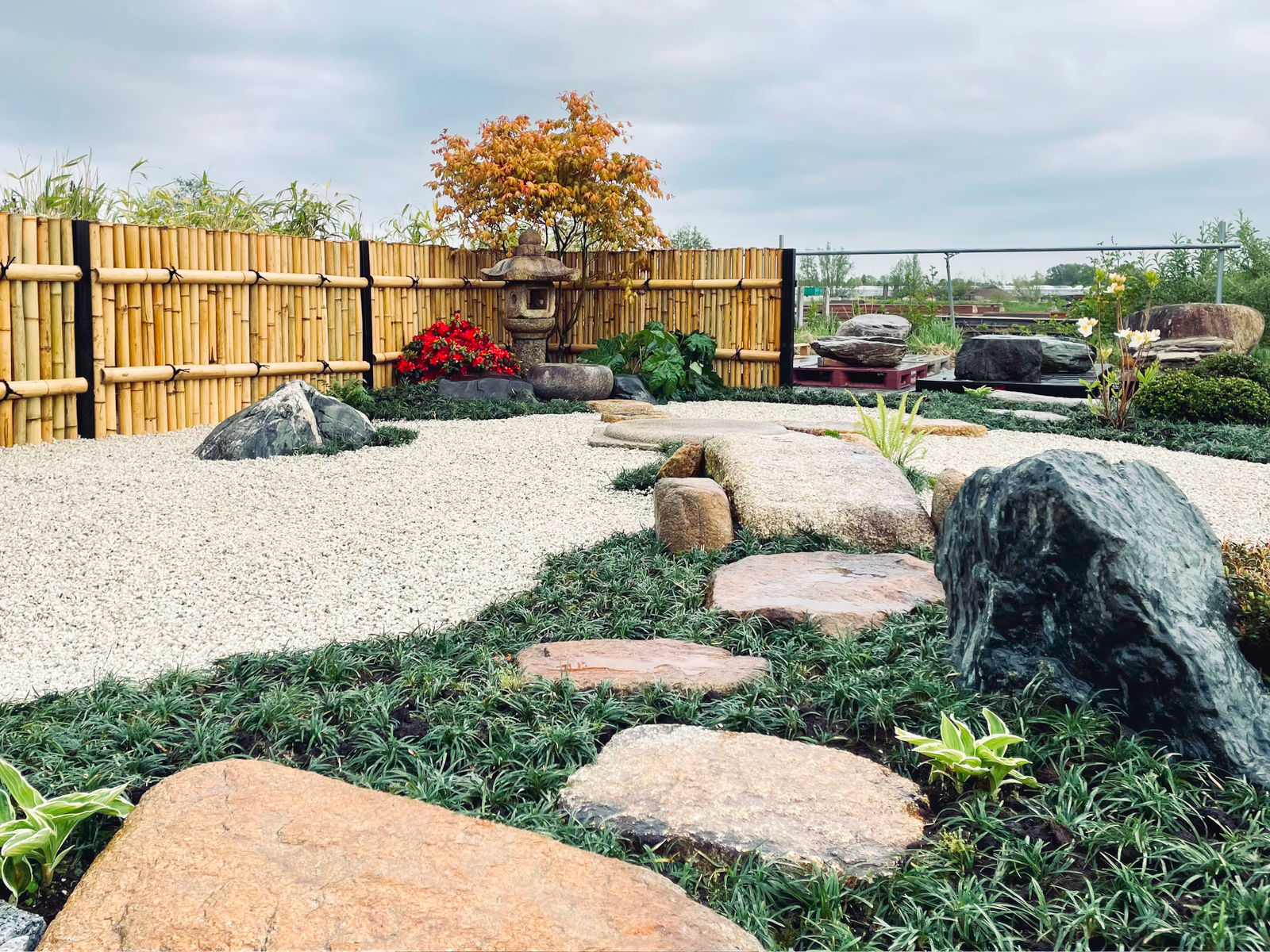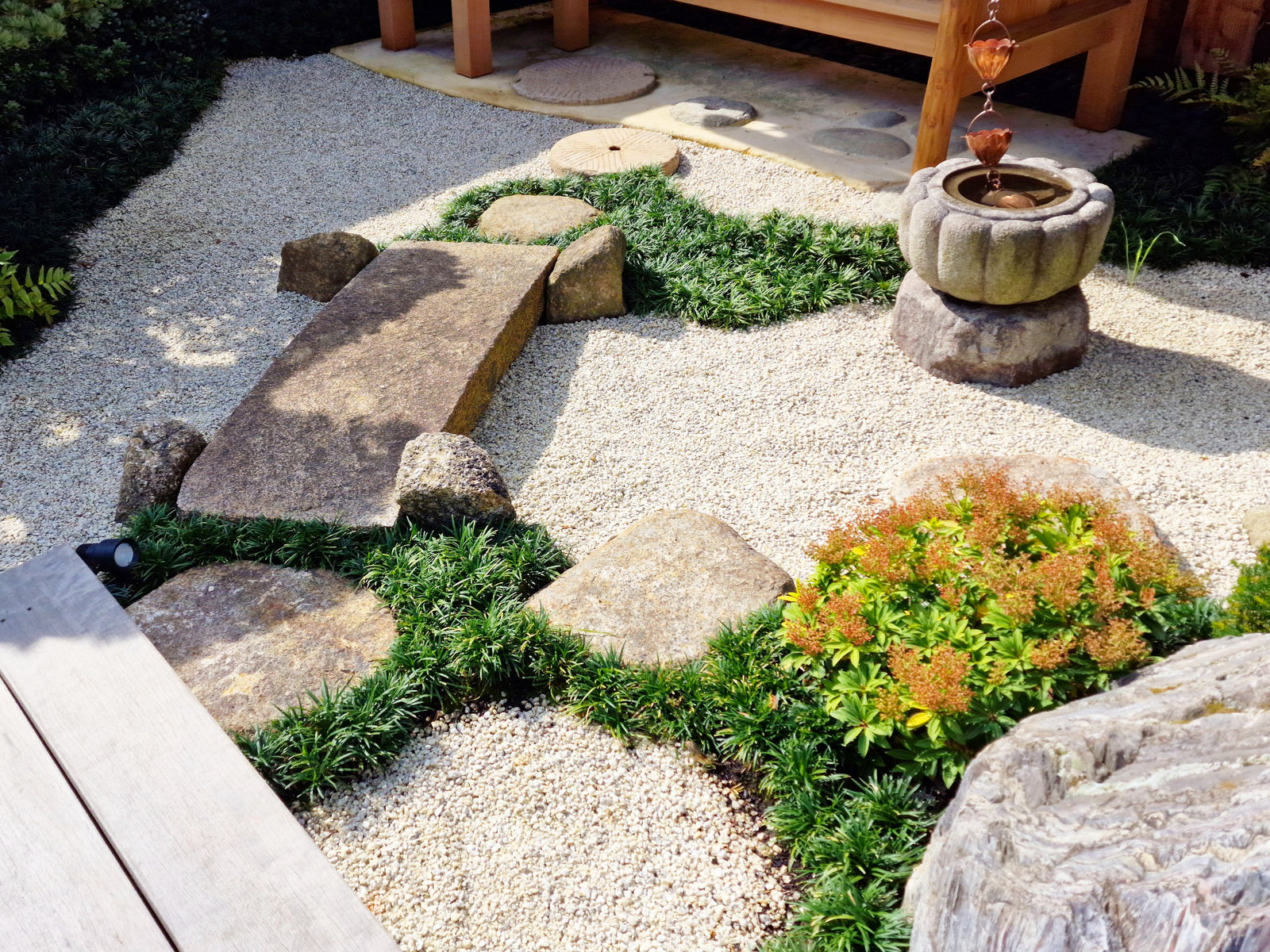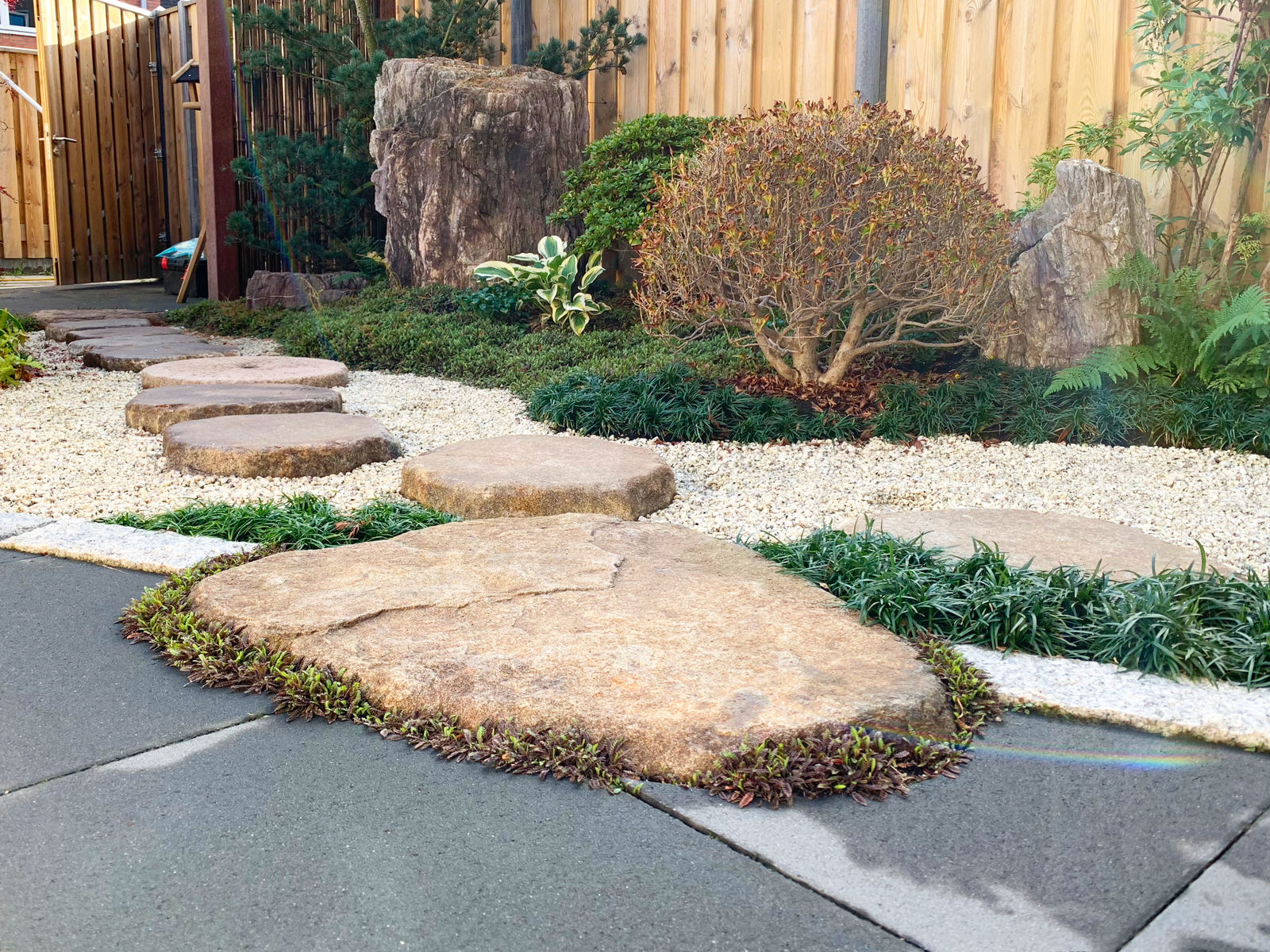Japanese Stepping Stones - Information

Traditional Japanese Stepping Stones and Kutsu-Nugi-Ishi. A Journey Through Form, Function, and Cultural Significance. Exclusively Available at Yokoso Japanese Gardens. In the refined landscape of the traditional Japanese garden, every element carries meaning, rooted in centuries of philosophical, aesthetic, and cultural tradition. Among these components, tobi-ishi (stepping stones) and kutsu-nugi-ishi(shoe-removal stones) hold a particularly special place. More than functional features, they are expressions of harmony with nature and deep respect for tradition. At Yokoso Japanese Gardens, we proudly offer authentic, hand-selected traditional stepping stones and kutsu-nugi-ishi, bringing the timeless elegance of Japan's garden heritage to your space.
Origins and Cultural Context
The tradition of using stepping stones in Japanese gardens dates back over a thousand years, with strong influences from the Heian and Kamakura periods. These stones, known as tobi-ishi, were originally used to keep kimono hems clean and dry when walking through tea gardens, temple paths, and aristocratic estates. They eventually became symbolic guides, leading guests along a contemplative journey through the garden. Kutsu-nugi-ishi, literally translating to 'shoe-removal stone,' is placed at the entrance of a tea house or a traditional dwelling. This single, large stone provides a dignified and respectful place for visitors to remove their footwear before stepping into the sacred space of the home or chashitsu (tea room). This ritual underscores the deep cultural emphasis on cleanliness, humility, and preparation of the mind for ceremonial acts. The placement and philosophy behind these stones are detailed in the Sakuteiki, the oldest known Japanese text on garden design, written in the 11th century. The Sakuteiki advises that stones should be set as if they are naturally embedded in the earth, and should reflect the essence of nature rather than human artifice. This principle guides the thoughtful arrangement of stepping stones and kutsu-nugi-ishi in any authentic Japanese garden.
Types of Traditional Stepping Stones
Each stone's size, shape, and texture are selected not only for practicality but also to evoke a natural, aged appearance, an essential element of wabi-sabi, the Japanese aesthetic that finds beauty in imperfection and transience. There are several traditional forms of tobi-ishi, each chosen for a specific purpose and feeling:
Standard Stepping Stones (Tobi-ishi) - Irregular yet flat stones used to create paths that wind gently through the garden. They encourage mindful walking and the appreciation of surrounding nature.
Bridge Stones (Hashi-ishi) - Larger, flatter stones spanning small streams or dry rivers, symbolizing a crossing into another realm or state of mind.
Entrance Stones (Shikidai) - Larger, rectangular or naturally formed stones placed near gates or house entrances, sometimes used interchangeably with kutsu-nugi-ishi.
Kutsu-Nugi-Ishi - Typically a singular, larger, flat-topped stone placed just outside a tea room or house entrance. It serves as the stone upon which guests remove their shoes before entering a structure, marking the threshold between the outer world and an inner, purified space.
Placement in the Garden: Guidance from the Sakuteiki
According to the Sakuteiki, the arrangement of stones should be guided by principles that mirror nature's asymmetry and flow. Stepping stones are never laid in straight lines; instead, they follow organic, meandering paths that suggest movement through a natural landscape. Stepping stones in a tea garden (roji) often lead from the outer gate to the inner garden, ending at the kutsu-nugi-ishibefore the tea house. This progression is not only physical but spiritual, each stone a deliberate step toward mindfulness and inner peace. The kutsu-nugi-ishi is usually positioned slightly lower than the threshold of the tea house or veranda, facilitating ease of use while maintaining visual flow with the rest of the garden. Key placement concepts include:
Irregular Rhythm - Avoiding symmetry, stones are laid at varied intervals and angles to slow one's pace and promote awareness.
Functional Alignment - Stepping stones are placed at a comfortable stride, usually allowing the average adult to step naturally from one to the next without strain.
Visual Harmony - Each stone harmonizes with the surrounding vegetation, architecture, and ground materials like moss, gravel, or sand.
Materials and Craftsmanship
Stones are never artificially cut to fit; instead, they are chosen and placed based on their existing shape and form. The irregularity of each stone invites contemplation, while moss or lichen that develops over time only enhances their presence. Authentic Japanese stepping stones and kutsu-nugi-ishi are traditionally made from natural stone, sourced from riverbeds, quarries, or mountains. The most prized materials include:
Granite - Known for its durability and naturally weathered surface, often used for kutsu-nugi-ishi due to its stability.
Tuff (volcanic rock) - Lighter in color and texture, tuff stones give a soft visual impression and age beautifully.
Slate and Schist - With layered surfaces and deep tones, these stones are selected for their textural contrast.
Fieldstone - Rounded and smooth, collected from natural landscapes to evoke a sense of time and place.
Exclusively Available at Yokoso Japanese Gardens
At Yokoso Japanese Gardens, we are proud to offer an exclusive selection of traditional Japanese stepping stones and kutsu-nugi-ishi, each handpicked and authentically sourced. Our collection includes antique stones with decades, sometimes centuries, of history, as well as carefully chosen new stones that will age gracefully within your landscape. Every piece is selected with respect to traditional Japanese garden aesthetics and placed in harmony with the principles laid out in the Sakuteiki. Whether you are constructing a tea garden, a dry landscape (karesansui), or simply adding a contemplative element to your modern space, our stones provide an unmatched connection to Japan's cultural heritage.
Conclusion
Traditional Japanese stepping stones and kutsu-nugi-ishi are more than elements of design, they are embodiments of a way of life that values harmony with nature, attentiveness to detail, and reverence for tradition. At Yokoso Japanese Gardens, we invite you to experience this timeless art form through our exclusive, authentic stone offerings. Each stone tells a story. Let it become part of yours.
We work closely with clients to ensure each stone's placement and purpose is aligned with their garden's design intent, offering both consultation and installation services rooted in authentic Japanese practice.
#JapaneseGarden #SteppingStones #KutsuNugiIshi #YokosoJapaneseGardens #JapaneseGardenDesign #WabiSabi #Sakuteiki #ZenGarden #TobiIshi #GardenInspiration #AuthenticJapaneseStyle #TeaGarden #TraditionalGardens #LandscapeDesign #NaturalStones














Contact Yokoso Japanese Gardens